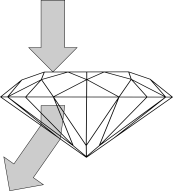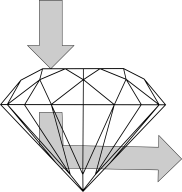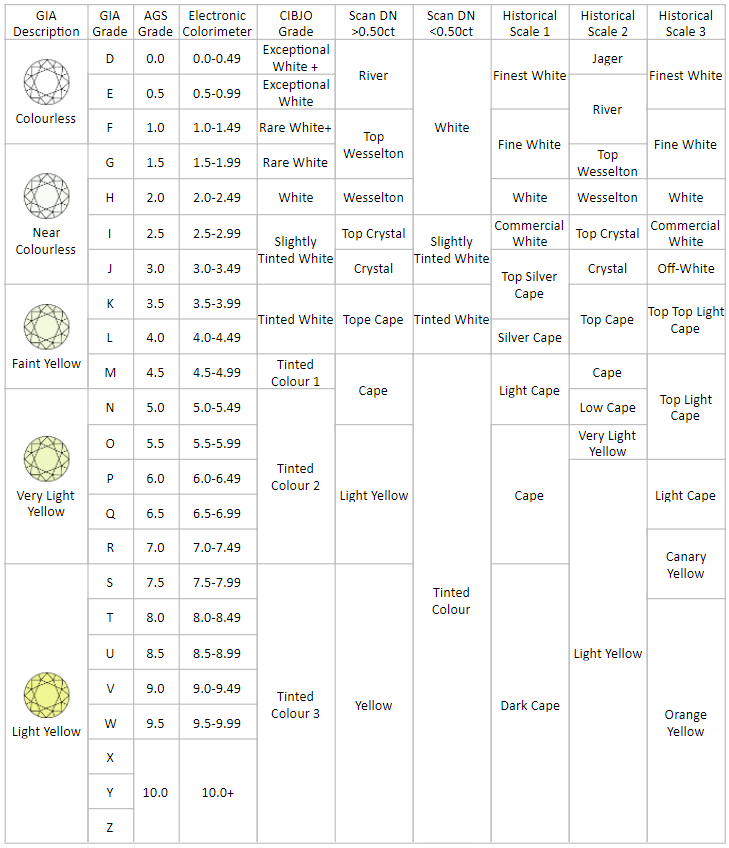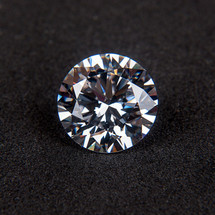Aug 23, 2023
Understanding diamond grading
When we talk about diamonds, we inevitably talk about the four Cs; carat, colour, clarity and cut. This seemingly simple code goes a long way to describing a diamond, but is that all there is to it? The short answer is no, but they do give us somewhere to start. Let's start by discussing the four Cs.
Carat is often confused with the dimensions of the stone, but it is in fact the weight, with each carat equal to 0.2 grams. The term comes from the ancient practice of balancing scales with carob seeds, which as they are small and uniformly sized, made perfect ballast when weighing precious stones and metals. Over the years, the term has come to be used for defining the purity of gold (24 karat or carat being pure gold) and the weight of gemstones of all types but in particular, diamonds.
Speaking in carat weight can be a little confusing as a 1.0ct round brilliant cut diamond is typically around 6.5mm, while a 0.50ct stone is around 5.0mm, but this can vary depending on the proportions of the stone's cut, so it is always good to have a clear understanding of the dimension of the stone as well as the weight.

The Colour of the diamond may be expressed using a variety of different terms depending on when and where it was bought, however the GIA (Gemmological Institute of America) scale is rapidly becoming the international standard. With this in mind, we have included a comparison of several grading scales below for interests’ sake, but we will be concentrating on the GIA scale.
As seen below, the GIA use a scale from D – Z to describe the colour of a diamond (when viewed through the table of the stone). The term ‘white’ is typically reserved to describe the range of D – J, although GIA prefers the terms Colourless (D – F) and Near Colourless (G – J) with K – M described as Faint Yellow and so on. With this in mind, you can expect that a stone that be graded K or below will have a noticeable tinge of yellow or brown. Fancy Yellow, Pink, Red, Blue and Green Diamonds are judged against their own colour scales.
Clarity is judged in the GIA grading scale as a representation of how apparent the natural flaws in the stone are in proportion to the overall size of the stone. Those which are apparent to the naked eye are judged to be Included (I1, I2 or I3), while the remaining grades are judges with the aid of a 10x magnification loupe. Slightly Included (SI1 or SI2) are stones with apparent natural inclusions as views under the loupe, Very Slightly Included (VS1 or VS2) stones are stones with less apparent natural inclusions and Very, Very Slighly Included Stones (VVS1 or VVS2) stones have almost no inclusions when viewed under the 10x magnification Loupe. Internally Flawless (IF) and Flawless (F) stones are perfectly clear under 10x magnification.

|

|

|

|

|
FL / IFFlawless & Internally Flawless |
VVS1 & VVS2Very, Very Slightly Included |
VS1 & VS2Very Slightly Included |
SI1 & SI2Slightly Included |
I1, I2 & I3Included |
Cut refers to the specific formation of facets that has been formed to shape the diamond rough into the sparkling gemstone that you see before you. Historically, stones were cut to maximise the remaining dimensions and carat weight of the stone while providing a pleasing appearance. The tradition dates back over 700 years however the modern brilliant cut only dates back to the 1940s.
Do not mistake shape with cut as there are many varieties of round shaped stones, but not all are brilliant cut. Cut does however refer to how well the stone has been cut, and so you will hear stones being graded as Excellent Cut for example. A well cut stone will reflect and refract the light in such a way as to return the vast majority back through the table, providing a superior sparkle.
Stone gradings will also judge the symmetry of the stone, which refers to how uniform and even the facets of the stone have been cut, with the best symmetry resulting in the hearts and arrows phenomenon. The last grading is for Polish, which refers to how smooth the finish of the cut is, as a poorly polished stone can diffuse the light and appear dull or may feature naturally occurring faults such as surface reaching inclusions.
When you combine a truly symmetrical cut, fine polish and ideal proportions, the results are just stunning.

|

|

|
SHALLOW CUTLight is reflected and refracted out the side |
IDEAL CUTLight is reflected and refracted back through the table |
DEEP CUTLight is reflected and refracted out the side |
Historically there have been a variety of standards that diamonds have been graded by, which only adds to the confusion in purchasing a diamond. Use of differing jargon can prevent the buyer from getting a clear understanding of the position of the grading within the overall scale of colour, so it is really important that customers educate themselves in the diamond grading standards.
While the GIA standard has become the predominant scale used, below is a comparison of several diamond grading scales that may be used to describe the 'whiteness' of a stone.


